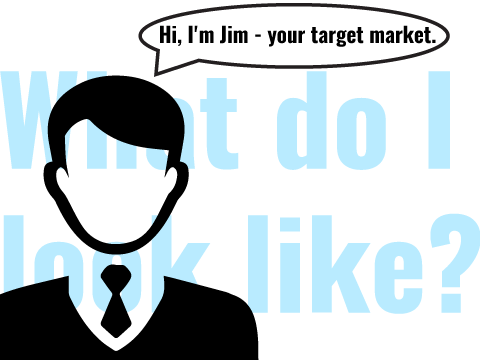Who is your customer?
When you first draft your business concept, one of the first questions you ask is: Who is your customer? Identifying your target market is a critical step, as it gives you the proper direction on how to market your product. But who is your customer? To find out, you should be creating a mock character that would be your idea client. Start out by creating a customer profile of this individual. You will want to note several important pieces of data about these individuals. You want to go so far, as to giving this mock character a name. Bringing this personal to as close to life will hone your marketing strategy.
You want to define the following details on their profile: gender, age, number of kids, what they do on the weekend (i.e. interests). The additional factor, such as status is important, “You wouldn’t put a Ferrari advertisement in a low-income neighborhood.” These are some of the very basic characteristics involved when targeting a customer. Below, we will tackle six crucial steps when answering: Who is your customer?
#1 Gender
For the most part, only 29 percent of small business owners are females, which leaves you 71 percent of the market geared towards males. Now you may want to take the approach of targeting a larger audience by aiming your advertisements towards men. However, you may be trying to leverage a small market, which may not be targeted as much by your competitors. Know your gender and their market share. Your end product plays a great role in your marketing strategy. Ladies feminine products mosttttttt likeellllyy are not going to be directed at men.
#2 Age
Creative Revolution offers digital marketing for small business owners, as well as startups. This can be tricky for our marketing ventures as the two may sound similar but are in fact exclusive from one another. Speaking in general terms, small business owners are largely older males. While startups tend to be created by young entrepreneurs, the age difference can be a generation or two. And a generation or two can make a world of difference when trying to reach them. When we develop our marketing strategy, we divide our efforts into separate target markets. Each with their message and solution to a problem. Our startup marketing is aimed towards younger crowds starting looking to get the ball rolling. Versus our small business owners that have established their business with years of work – aimed at older generations, less technical, and less likely to stray from the path.
Also, another key aspect is where to market to these individuals. Think of it like high-school, the jocks are over by gym, and the nerds are in the computer classroom. Selling a computer in the locker-room is going to be more difficult than in the computer room. Go to where your audience is located. The younger generation, the startups, are more focused on social media. You will often find those leads being generated through Twitter Facebook, Instagram, etc.. As opposed to the small business owner generation, where a more traditional print advertisement will be more effective. We do add the caveat that our goal of reaching tech-savvy small owners can often be discovered on social media, as they tend to be trend leaders. Some social channels are also seeing a swing in generations being the majority – Facebook comes to mind.
Who is your customer?
#3 Needs
Determining needs is the first step in the buying process. You must get into the mind of the purchaser to craft your message. The message offers a solution to their problem. For our audience, we are looking for small business owners with tight budgets, but want to build leads, and drive traffic to their website. Perhaps they are unaware of the value of a social media platform to drive traffic and leads. So their problem could be a lack of presence in social media and a lack of traffic on their website. Our message will express our solution and how we can help at an affordable cost.
#4 Location
Where is your target audience located? You can target local clients or try and reach your audience on a global level. Depending on the type of product or service you offer, an obvious answer should present itself. Marketing your business to the India will not secure you any leads if your product is a local grocer in small-town Massachusetts. This also ties back into #2 concerning where to find them in the digital world.
#5 Language
Language is a double entendre. Surely you want to write your message in English if you are looking for an English speaking audience, and vice versus with any other language. However, the actual language of your copy will play an important role too. Having more to do with the overall tone of your message – what tone of copy influences your audience and creates a reaction? Does it need to be upbeat, light-hearted? Or does your message have a serious tone? Your fictitious character will have these attributes summarized.
#6 Status
What does your ideal client do on the weekend? What do they drive? What type of neighborhood do they reside in? For our marketing purposes, we know that our target audience is a city dweller, presumably taking public transportation, and taking part in weekend festivities. Therefore a reasonable focus will be on subway advertisements and sponsorship of community activities.
By now you should have an outline of who is your customer, and your target market is defined to the T. But now you need to know how many people you can potentially reach? Keep a lookout for our next post on Facebook advertising & reach.
Would you like to share your thoughts?
Leave a Reply
You must be logged in to post a comment.


0 Comments